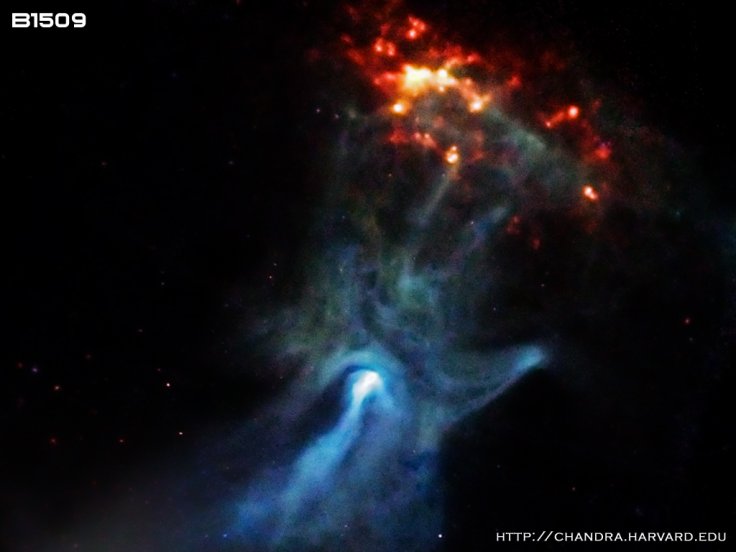NASA shared a photo of a pulsar that strangely resembles a massive cosmic hand in space. The brightness of the star that created the pulsar makes it look like the Infinity Gauntlet used in the Marvel comics and movies.
The cosmic structure that featured in NASA's photo is called PSR B1509-58 or B1509 for short. It is a pulsar that's located about 17,000 light-years from Earth. The image of the pulsar was taken using NASA's Chandra X-ray Observatory and the Nuclear Spectroscopic Telescope Array.
Forming The Infinity Gauntlet In Space

As explained by NASA, B1509 was formed following the death and explosion of a star. This stellar object, which is about 12 miles in diameter, became a neutron star after it ran out of fuel. This caused the star to collapse under the weight of its own gravity.
Despite its death, the star is still spinning at an incredible rate, which is at around seven times per second. Its movement, combined with its stellar explosion, ejected a cloud of materials into its surroundings, which formed into a strange cosmic structure that resembles the Infinity Gauntlet used by the Marvel character Thanos.
"It rapidly spins around, seven times per second, firing out a particle wind into the material around it -- material that was ejected in the star's explosion," NASA explained in a statement. "These particles are interacting with magnetic fields around the material, causing it to glow with X-rays. The result is a cloud that, in previous images, looked like an open hand."
Effect Of B1509 On Its Surroundings
As seen in the photo, the cosmic gauntlet appears to be reaching out to a neighbouring structure in space. According to NASA, the structure near B1509 is a cloud of gas known as RCW 89. In the photo, the gas cloud can be seen with a bright reddish glow. As noted by the agency, B1509 is responsible for the appearance of RCW 89. Through its finger-like features that extend into the gas cloud, B1509 is energizing RCW 89.
"Finger-like structures extend to the north, apparently energizing knots of material in a neighbouring gas cloud known as RCW 89," NASA stated. "The transfer of energy from the wind to these knots makes them glow brightly in X-rays (orange and red features to the upper right)."









